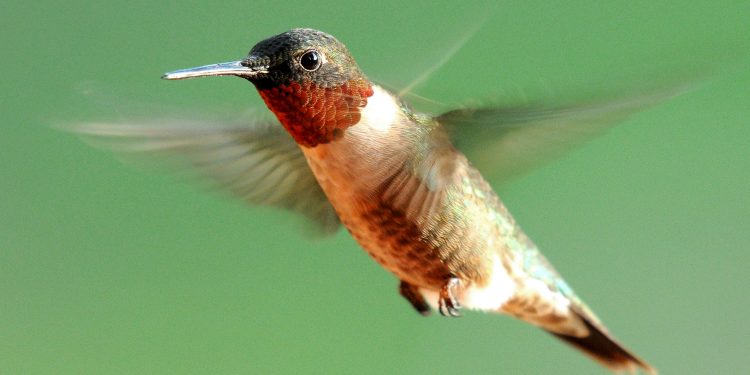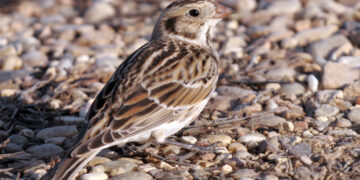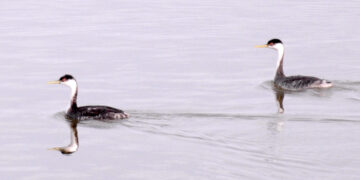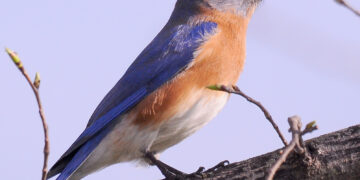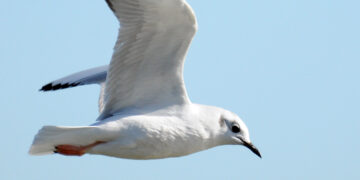Ruby-throated hummingbirds and late-summer feeding
At this time of summer, many folks are wondering when they should stop feeding hummingbirds.
And the answer isn’t simple.
Sometimes hummingbirds may be gone by mid-September, but a few years ago, we had some hanging around well into October.
I plan to keep mine up until I don’t see any for a few weeks.
The National Audubon Society reports that people can leave feeders out for as long as they have hummingbirds around.
And don’t worry about hummingbirds staying longer than they should just because there is a feeder available, they know when to leave and will do so when it’s time.
According to Audubon.org, “You can even continue to provide the feeder after your hummingbirds disappear — late migrants or out-of-range species can show up into early winter. Follow the guidelines for keeping the feeders clean, even if the nectar goes untouched. Always discard any unused nectar in the feeder when you take it down for cleaning.”
Also, hummingbirds don’t all leave at the same time. While the birds that you’ve been feeding all summer may be at the Texas Coast right now, preparing for the long flight across the Gulf of Mexico, you may have new visitors which have spent the summer farther north, such as in Canada, eh.
Additionally, males typically leave first, followed by females, then juveniles.
Homemade nectar
The best way to make hummingbird nectar by mixing refined white sugar and water. That’s one part sugar to four parts water during the summer. And only refined white sugar should be used.
I often mix one cup of sugar to four cups of water that has been brought to a boil, then cooled, then store it in the refrigerator. However, it is recommended to make sure nectar is about room temperature before placing it outside. Never too cold or too hot.
Also, a one- to three-parts mixture can be created at this time of year before the birds migrate. It helps fatten them up. I am currently feeding a mixture of one cup sugar to three cups water.
There is no need to add red dye to homemade nectar. Hummingbirds will be attracted to the colors on the feeders themselves.
It is strongly recommended that nectar not be allowed to sit outside until it becomes toxic.
I change mine after about every 48 hours in the hottest part of summer, and about every three or four days when temperatures are cooler. Also, I clean each container at every refill to make sure that no black mold forms.
The National Audubon society recommends cleaning with just hot tap water, or using a weak vinegar solution. Avoid using dish soaps, as it can leave harmful residue in the feeder.
And some people believe nectar feeders shouldn’t be placed where the sun will shine directly on them. Just out of caution, I keep mine in the shade.
Ruby-throated hummingbird
I am featuring the Ruby-throated hummingbird for this column. The bird is not real common in southwest Oklahoma during the summer, but is more so during migration, which is now underway.
Appearance
Males and females are sexually dimorphic (visibly different), with males being slightly smaller and having slightly smaller bills.
Ruby-throated hummingbirds are basically emerald and white in color with the males having the red throat. Actually, the male’s throat feathers aren’t really red. The feathers, which resemble scales, are iridescent, so they appear red in the right light. If you look at a male from the side, or in poor light, sometimes the throat feathers appear matte black.
Males have pointed tail feathers and gray chest feathers.
Females are about three inches in length and have whitish throats and white-tipped outer rounded tail feathers – the outer three feathers on each side of the tail.
Adult males lack the white tips on the tail feathers. However, immature ruby-throats – both male and female – resemble adult females and even have the white-tipped tail feathers. However, immatures often have heavier throat markings than adult females.
Also, some immature males may have one or more iridescent spots on the neck by fall.
Range
While there are hundreds of hummingbird species from Alaska to Chile, only about 13 reside in the United States. And the ruby-throated hummingbird is the only one that breeds in the eastern states.
Ruby-throated hummingbirds can be found over the eastern three-quarters of Oklahoma from about early April to September/October. Their range pretty much runs from central Texas north into Canada and all of the eastern U.S.
Ruby-throats winter mostly in southern Mexico and Central America.
Many ruby-throated hummingbirds travel 600 miles across the open water of the Gulf of Mexico in a nonstop 24-hour flight.
The birds will double their weight prior to migration. With each weighing about the same as two pennies, they will lose half their body weight flying over the Gulf.
While it was once believed that all ruby-throats flew across the ocean during migration, it was later discovered that at least some circumnavigate the Gulf.
Diet
Ruby-throats will drink nectar from any flower, but they prefer red tubular flowers. They also eat some insects, including mosquitoes, fruit flies, gnats and small bees. Small spiders, too.
When regular food is scarce, they will also consume tree sap.
Nesting
Males typically show up to breeding areas about a week before females. After a quick courtship, males and females mate, and then part ways.
According to the Cornell Lab of Ornithology, a female will then spend about a week to 10 days constructing the nest. She will lay one to three eggs,
Incubation takes about two weeks. The young are fully grown when they leave the nest about 18 days after hatching. Young are fed regurgitated insects, as nectar lacks the protein needed to grow. They will weigh much more than their mother by the time they fledge. Ruby-throats raise one to three broods during a breeding season.
Also, baby hummingbirds do not visit feeders. Often, people who think they saw a baby hummingbird at flowers or even feeders, may instead have seen a hummingbird moth. Or possibly a sphinx moth. Both visit flowers during the day and their wingbeats are very fast, just like hummingbirds.
Odds and ends
• If you’ve ever seen a hummingbird exhibiting strange behavior on cold mornings, those birds may have been in torpor. Torpor is a survival measure, a very deep sleep which reduces the bird’s temperature and slows down the bird’s metabolism, heart rate and breathing. Torpid birds are often found asleep at feeders, and even hanging upside down from feeders and tree branches.
• Hummingbirds can fly not only forward, but also backward, side to side, up, down, on their sides, and upside down, and they can even hover in place. Also, they can stop on a dime in mid-air.
• Hummingbirds have the largest brain relative to body size of all birds. Also, they have the largest heart per body size of all animals.
• A hummingbird’s tongue is like a straw, with which they can draw out a lot of nectar. Which is a good thing, because they must consume two times their body weight in nectar each day!
• The ruby-throated hummingbird’s wings beat about 53 times per second. Per second!
• A hummingbird’s heart can beat more than 1,000 times in a single minute. When sleeping, their heart rates are much reduced, to anywhere from 50 to 180 beats per minute.
• At rest, like when perched on a tree branch, a ruby-throat will take three to four breaths per second.
Request
If you’ve had hummingbirds visiting your feeders all summer, whether ruby-throated or black-chinned, please let me know. And please include a general location, i.e., Lawton, eastern Comanche County, etc. Reach me at rnw@usa.com. Thank you!
Editor’s Note: Randy Mitchell is a freelance writer and photographer. He has been an avid birdwatcher, nature enthusiast and photographer for more than 40 years. Reach him at rnw@usa.com.
Want to reach a local audience and grow your business?
Our website is the perfect platform to connect with engaged readers in your local area.
Whether you're looking for banner ads, sponsored content, or custom promotions, we can tailor a package to meet your needs.
Contact us today to learn more about advertising opportunities!
CONTACT US NOW